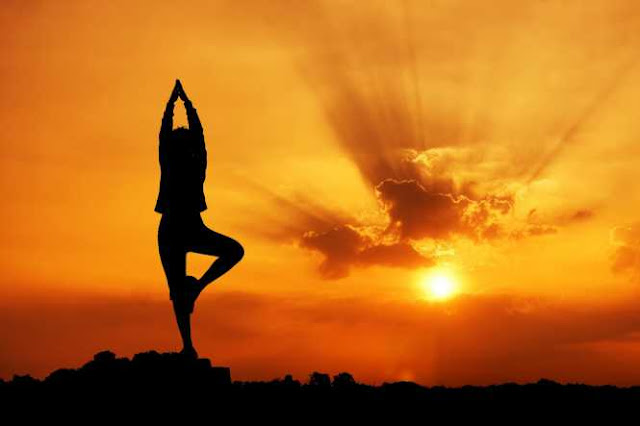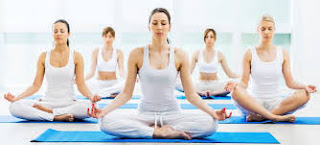Learn Some Important Benefits of Surya Namaskar
If you're looking for a simple, enjoyable way to start your
day that provides a diverse range of health benefits, consider practicing Surya
Namaskar. Surya Namaskar is a special sequence of yoga postures and chants that
together comprise the traditional Sun Salutation.
Here are List of Some Surya Namaskar Benefits:
Ø
Tones up the digestive system by the alternate
stretching and compression of abdominal organs. It
activates digestion and gets
rid of constipation and dyspepsia.
Ø
Strengthens abdominal muscles.
Ø
Thoroughly ventilates the lungs, and oxygenates
the blood.
Ø
Acts as detoxifying agent, by getting rid of
enormous quantity of carbon dioxide and other toxic gases.
Ø
Promotes sleep and calms anxiety.
Ø
Tones up the nervous system and improves memory.
Ø
Normalizes the activity of the endocrine glands
- especially the thyroid gland.
Ø
Refreshes the skin. Prevents Skin disorders.
Ø
Improves muscle flexibility.
Ø
In women, stimulates the breasts to help
firmness normally. Restores any lost elasticity, through
stimulation of glands
and the strengthening of pectoral muscles.
Ø
menstrual irregularity and assists in easy
childbirth.
Ø
Suppresses
Ø
Prevents loss of hair and graying.
Ø
Helps reduce fat.
Ø
Reduces abnormal prominence of the Adam's apple.
Ø
Eliminates unpleasant smells from the body.
Ø
Lends grace and ease of movements to the body.
Ø
Revives and maintains the spirit of
youthfulness.
Ø
Broadens chest and beautifies arms.
Ø
Makes the spine and waist flexible.
Ø
Produces health, strength, efficiency and
longevity.
The 12 poses of the Surya Namaskar, in order are:
Ø
Pranamasan / Prayer Pose – The first pose, where
one stands erect with feet fully touching each other,
and palms together. The
idea is to start with a prayer to the sun.
Ø
Hastauttanasana / Raised Arms Pose – The pose
where arms are raised upward, with palms still
together. The idea is to stretch
the body, towards the sun. Inhale Pose.
Ø
Hasta Padasana / Hand to Foot pose – A pose
where one bends forward such that our palms touch our
feet, while keeping our
spine erect, and without bending our knees. Exhale pose.
Ø
Ashwa Sanchalanasana / Equesterian Pose – Pose
where the right leg is pushed as far back as possible,
with the left leg
between the palms on the ground. Inhale Pose.
Ø
Dandasana / Stick Pose – A pose where you
balance the entire body on your arms, keeping the spine
erect.
Ø
Ashtanga Namaskara / Eight Point Salutation Pose
– A pose where the chin, chest, palms, knees and
feet are touching the ground,
with the hips raised. Exhale Pose.
Ø
Bhujangasana / Cobra Pose – A pose like the
cobra, where the lower body and palms touch the
ground, and the upper body is
stretched upwards and forward. Inhale Pose.
Ø
Adho Mukho Shavasana/ Downward Dog Pose – With
the palms and feet touching the ground, the
hips are raised so the body forms
an inverted “V”, resembling a stretching dog. Exhale Pose.
Ø
Ashwa Sanchalanasana (Equestrian pose) – Pose
where the left leg is pushed as far back as possible,
with the right leg
between the palms on the ground. Inhale Pose.
Ø
Hasta Padasana / Hand to Foot pose – A pose
where one bends forward such that our palms touch our
feet, while keeping our
spine erect, and without bending our knees. Exhale pose.
Ø
Hastauttanasana / Raised Arms Pose – The pose
where arms are raised upward, with palms still
together. The idea is to stretch
the body, towards the sun. Inhale Pose.
Ø
Tadasana / Standing Pose – A relaxing pose,
where one stands erect, with arms to the side. Exhale Pose.



Comments
Post a Comment